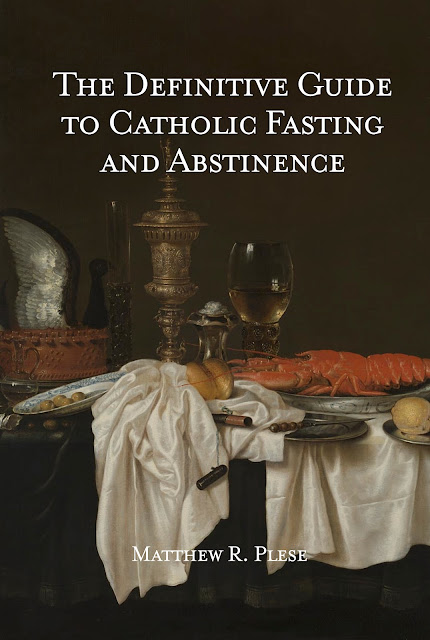In this world, so much attention is paid to pop culture icons dying and fads. Why are the papers not covered with this story? This is true NEWS. This is a miracle! Bread has turned into human flesh and blood and science has confirmed this. This is true news. We should publish news of this miracle far and wide to help win over souls and show non-Catholics (and fallen away Catholics) that the Catholic Church possesses the truth of salvation and God confirms this with miracles.
As a proponent of the Traditional Latin Mass who does not attend (or encourage others to attend) the Novus Ordo Mass, what are we to think of Eucharistic miracles taking place from consecrations in the Novus Ordo? This week, the website for the Society of St. Pius X published a very relevant article in light of the miracle that has taken place in Poland.
From the aforementioned article:
Recent miracles, which are investigated by scientists and made public by the proper ecclesiastical authority: are they not in the plan of God? And today as in the past, a they not a reminder of His Real Presence, a powerful apologetical argument, and an invitation to increase our faith and devotion?
On Christmas Day, 2013, a consecrated host accidentally fell to the floor during the distribution of Communion in the parish of St. Hyacinth, Legnica, Poland. The priest picked it up and placed the host in a container with water as the rubrics prescribe in such a case. Soon after, red stains appeared on the host.
The then bishop of Legnica, Stefan Cichy, created a commission to investigate it. In February, 2014, a tiny red fragment of the host was separated and placed on a corporal.
The Scientific Process
Samples were taken in order to conduct thorough tests by the Department of Forensic Medicine in Szczecin.
The final medical statement reported that “in the histopathological image, the fragments were found containing the fragmented parts of the cross striated muscle. It is most similar to the heart muscle.” DNA tests also determined the tissue to be of human origin, and found that it bore signs of distress.
The Vatican Investigates
In January 2016, Bishop Kiernikowski presented the matter to the Vatican’s Congregation for the Doctrine of the Faith. On April 10, Bishop Zbigniew Kiernikowski of Legnica made public in a Communiqué that a Eucharistic miracle had happened in 2013. In accordance with the Holy See’s recommendations, he ordered parish priest Andrzej Ziombrze “to prepare a suitable place for the Relic so that the faithful could give it the proper adoration.”
I also ask for providing the visitors with information and conducting the regular teaching that could help the faithful to have the proper attitude to the Eucharistic cult. I also command to form a book to register all received benefits and other miraculous events.”
Bishop Kiernikowski concluded his announcement with these words:
I hope that this will serve to deepen the cult of the Eucharist and will have deep impact on the lives of people facing the Relic. We see the mysterious sign as an extraordinary act of love and goodness of God, who comes to humans in ultimate humiliation.”
In Sokolka, Poland in 2008, a similar miracle took place, and a separate investigation led by Prof. Maria Elizabeth Sobaniec-Łotowka and Prof. Stanislaw Sulkowski, both from the University of Bialystok, concluded that the fragment analyzed was cardiac muscular tissue of a dying man.
Historical Details
Following their conquest of Russia, the Mongols (Tatar) commanded by Batu Khan invaded Poland and Hungary in 1241. As it happened so often in the history, Poland stood up courageously to defend Europe and stop the invaders. At the Battle of Liegnitz, or Legnica, on April 9, 1241, the Mongols defeated a Polish army under Henry II, prince of Lower Silesia.
But this battle put an end to the Mongol invasion for some time. They turned away from Bohemia and Poland and headed south. The Soviets – who often used symbols - had a Red Army battalion in Legnica composed exclusively of soldiers from Central Asia.
The parish where these events happened is dedicated to St. Hyacinth, the first Polish Dominican and companion of St. Dominic. In 1240, during the Siege of Kiev by the Mongols, as the friars were fleeing, Hyacinth went to save the ciborium from the tabernacle in the monastery chapel. He heard the voice of Mary, asking him to take her with him. Hyacinth lifted the large stone statue of Mary and saved both the Blessed Sacrament and Our Lady.
St. Hyacinth's church in Legnica was built in 1904/5 by order of Emperor Guillaume II when Silesia was under the Prussian dominion. It was then a Protestant temple built “in memory of Emperor Frederic III”. In 1945, the Red Army used it as a stable for horses. In 1972, when it was eventually converted to the Catholic Faith, it was the unique case of a Protestant church converted into a Catholic church in recent Polish history.
Answer to a Common Objection
Some may ask the question: how can God allow a miracle to happen in the context of the New Mass?
When we say the New rite is defective, we do not say all the Masses celebrated with this rite are invalid. We say that the rite in itself departs from the unequivocal expression of the Catholic doctrine about the priest, the Real Presence, and the propitiatory character of the sacrifice.
During any valid Mass, the host is consecrated and therefore Our Lord is present under the species of wine and bread, no matter how the reverence of the priest and of the assistants treat Him.
In fact, Church history shows us that Eucharistic miracles - which consist precisely in the appearance of other species - often happen because of doubt or irreverence. At Lanciano, the priest doubted the Real Presence. At Cascia, the priest was irreverent by putting the host in his breviary for a sick call.
Whenever the mass is valid, Our Lord is present. God freely manifests His power by a miracle to rectify the attitude towards the reality of the Eucharist. May these miracles lead to the suppression of Communion in the hand and bring the definitive triumph of the traditional Mass!








6 comment(s):
Thanks. Great article. i will share it. At my NO parish. As doon as Mass is over practically everyone forgets about Jesus in the blessed sacrament.
Our p.priest has returned the tabernacle to the alter. The whole congregation is focussed on it during mass. Everyone is hsppy about it and is respectful during mass. They even stay until the last lines of the closing hymn.
Then. Boom. It's as though the church turns suddenly into a rec. hall. Everyone talking at the top of their voices. It's crazy. It as though they forget that the sanctuary is a sacred space even when mass is NOT being celebrated.
I am sure that if the Cardinal in Toronto, returned everyone to communion in the tongue, this wld improve.
The Eucharistic miracles in the Novus Ordo clearly show that the Novus Ordo is valid and there is no reason to doubt that. Doubting the Eucharist means doubting Jesus himself. It's a sign that sedevacantism is false.
Anonymous, your comment is logically flawed. If the Novus Ordo is valid, that doesn't mean it's pleasing to God. The Orthodox liturgy is schismatic and still valid. And it means and says absolutely nothing whatsoever regarding the man who claims to be Pope. If he holds the fullness of the office of the papacy is not dependent on the Novus Ordo's validity, or lack thereof. In fact, your conclusion does not logically follow whatsoever.
To start, I direct you and anyone else to this article "Can A Valid Novus Ordo Mass Offend God" at https://acatholiclife.blogspot.com/2022/01/can-valid-novus-ordo-mass-offend-god.html. The answer is yes. And it doesn't matter if it is valid or not.
Thanks so much for this article. We have no traditional Mass nearby and so we go to a Novus Ordo liturgy. (But we have a great priest!) I was having serious worries after reading of Eucharistic miracles only in Tridentine Mass. This article is reassuring!
Hello Elyse, I would also suggest this one:
https://acatholiclife.blogspot.com/2020/07/why-you-should-not-attend-novus-ordo.html
How can a rite be defective and still valid? This implies that somehow the priest performed a valid NO mass by accident. How is that possible? And you can not say that it is because God wanted to show his glory to the doubting priest, because it shows a lack of humility to claim that he knows the reason behind God's action, or the mind of the priest for that matter. Furthermore, "Church history shows us that Eucharistic miracles often happen because of doubt or irreverence" this is quite an inadequate and lazy argument to employ, because it can be said that almost any miracle or miraculous healing is a response to doubt of some kind. Moreover the implied logic is problematic, "if the person shows no outward sign of reverrence, then God must have done a miracle to chastise them of their doubt" and inversely "if the person shows outward signs of reverrance, then God must have sent the miracule as a reward."
Mag-post ng isang Komento